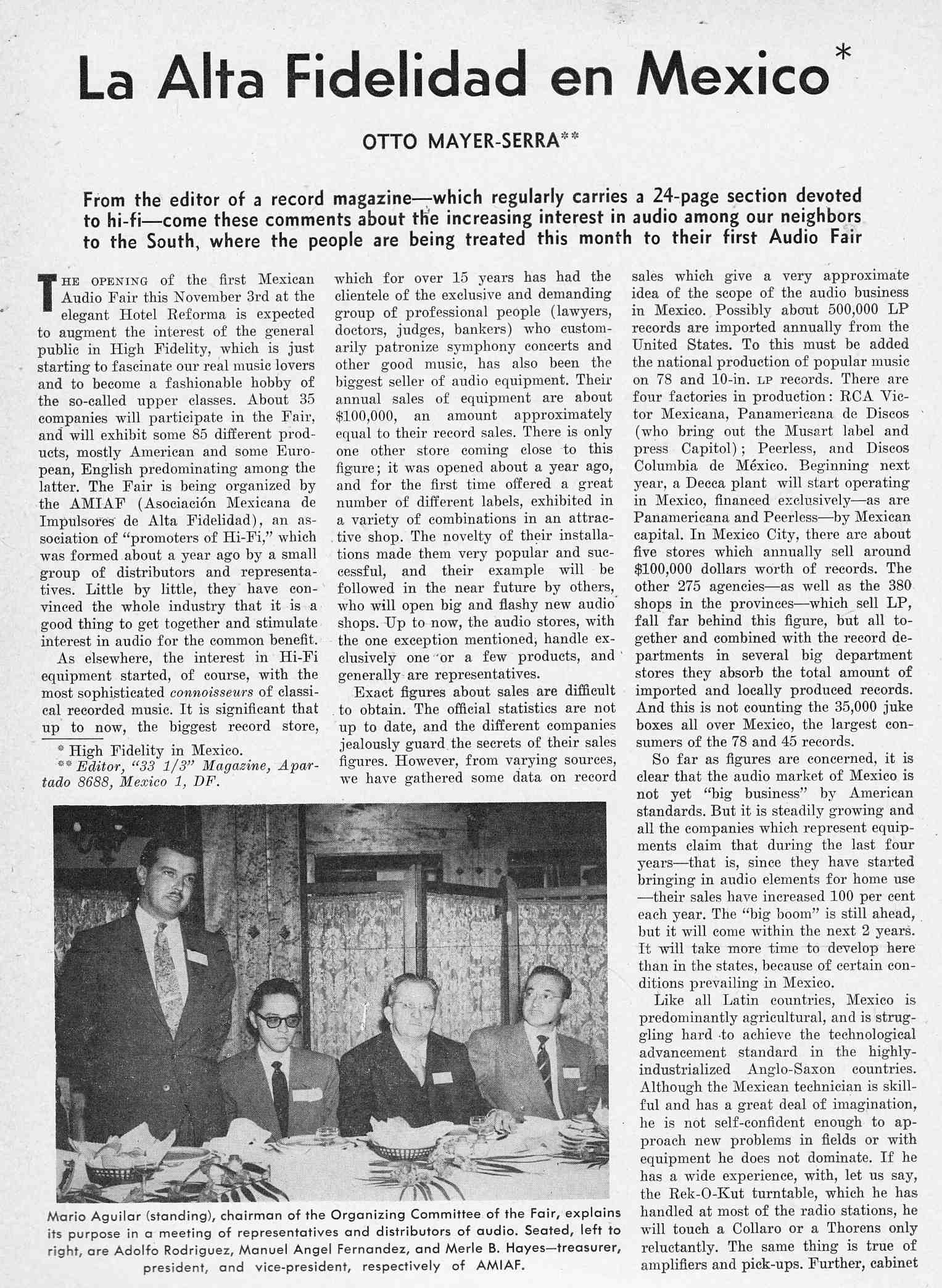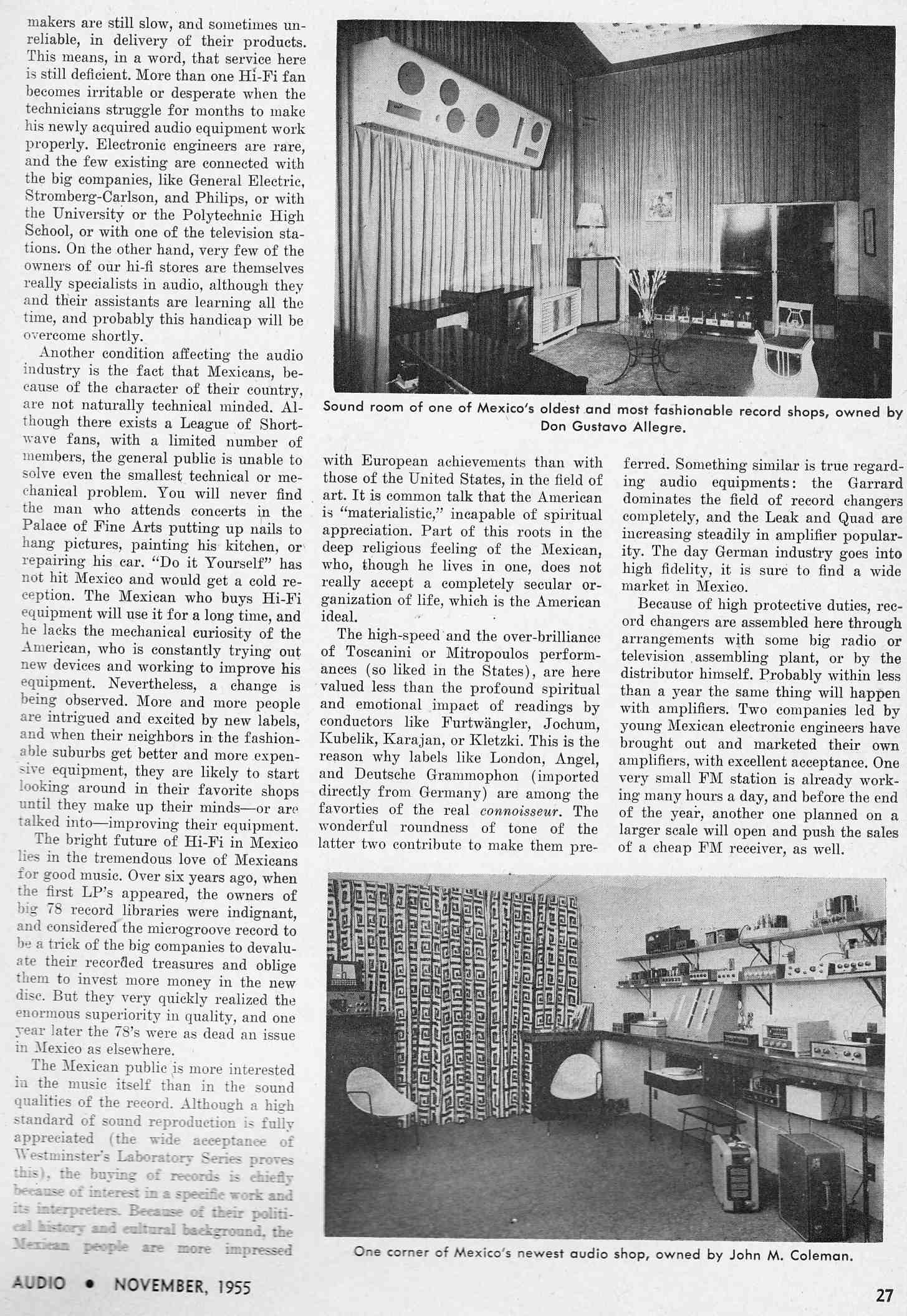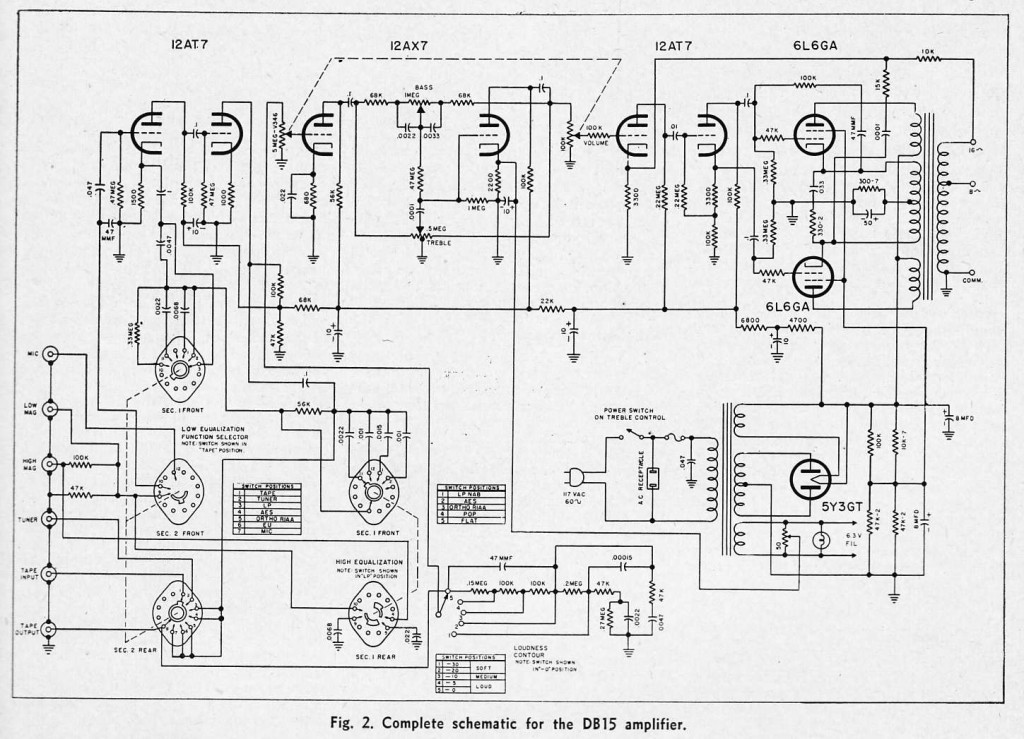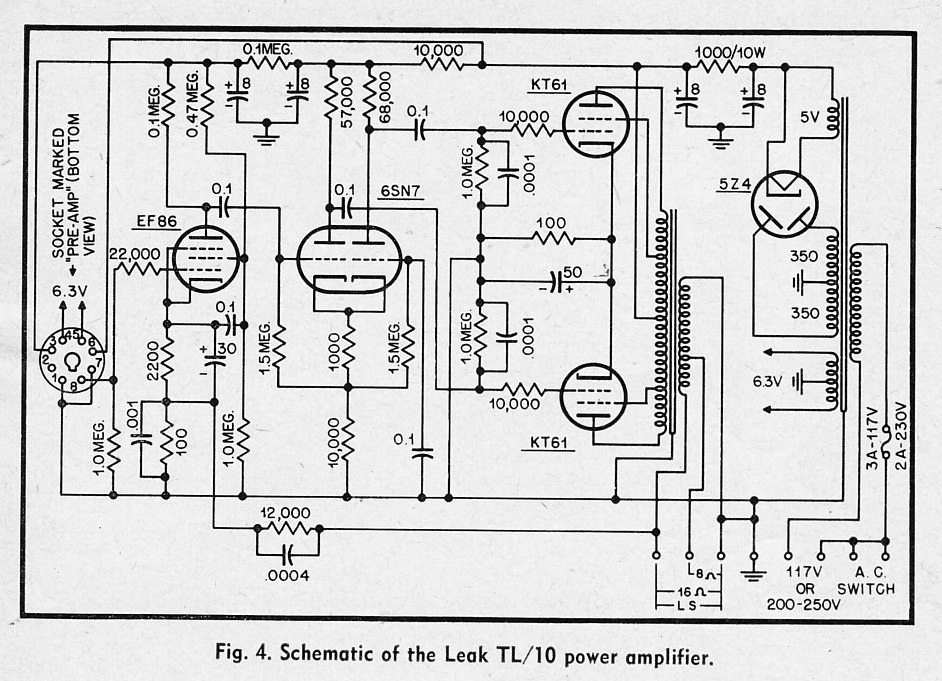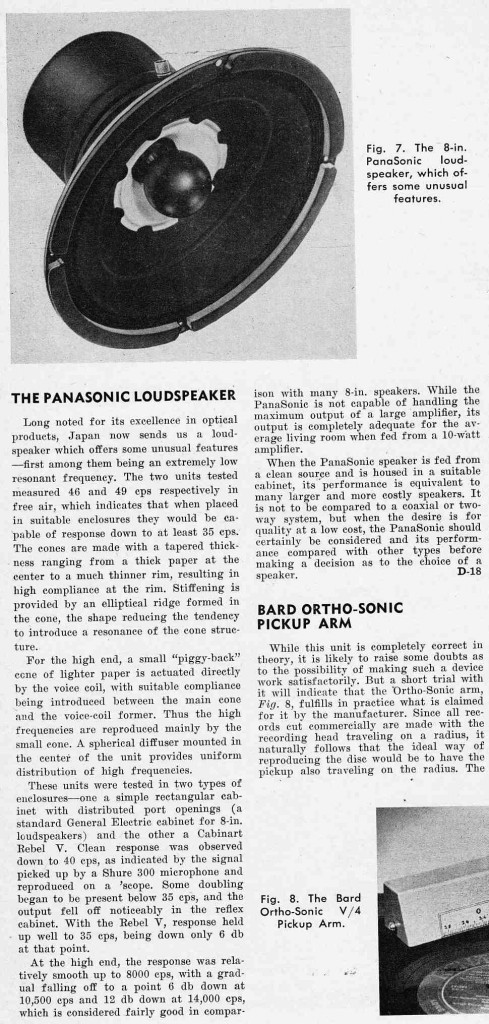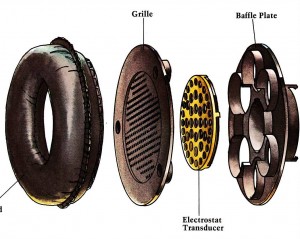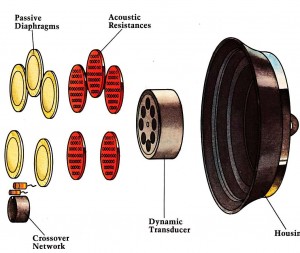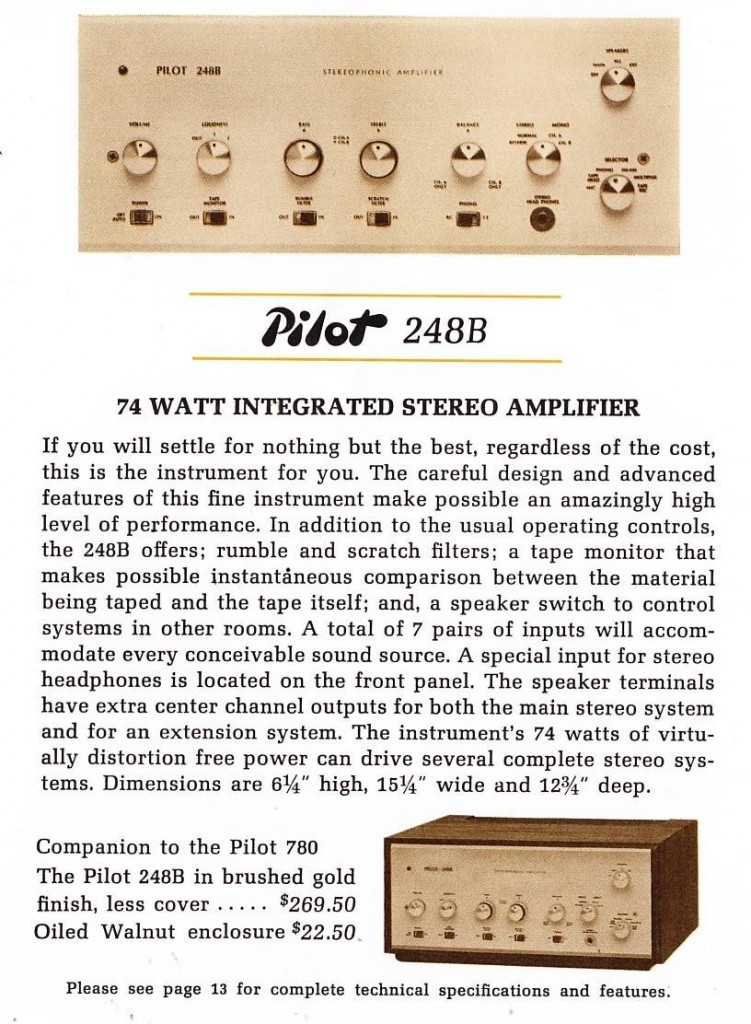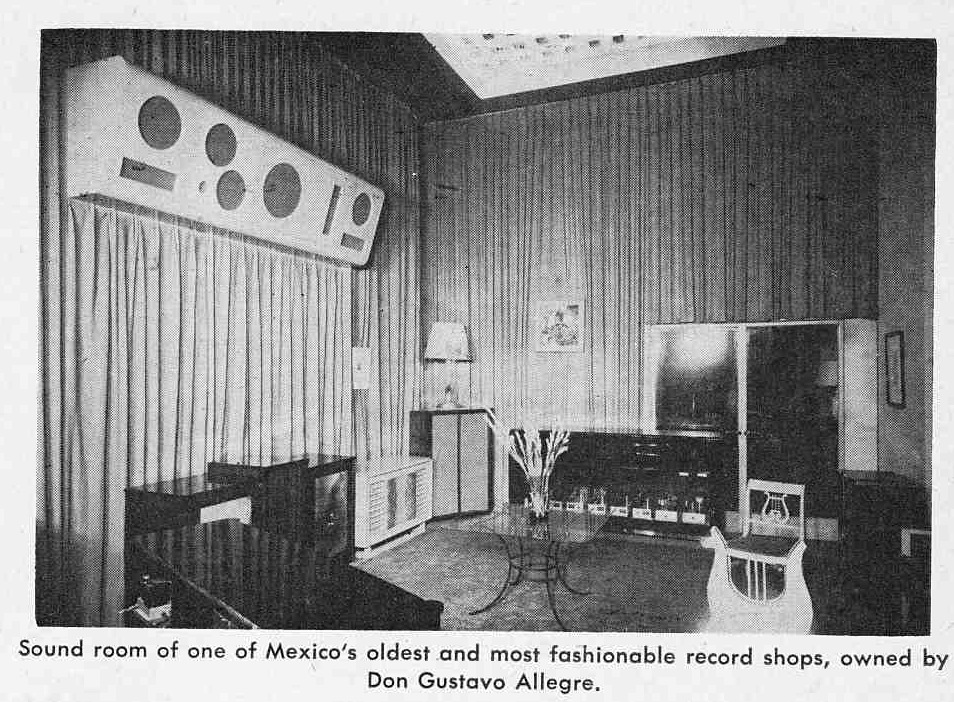 A two page article from AUDIO magazine circa 1955. Consider this article in comparison to “Japan Goes Hi Fi.” How differently these two countries have developed since these pieces were written. Both certainly became manufacturing powerhouses, but Mexico has been much less able to keep the profits from those operations in their country. I have owned plenty of audio-objects made in Mexico (Fender guitar amps come to mind) but I have personally never seen a Mexican hi-fi brand. Anyone? Also: please note: this article is presented for historical reference only; I do not endorse the political/ethnic generalizations and characterizations that author makes.
A two page article from AUDIO magazine circa 1955. Consider this article in comparison to “Japan Goes Hi Fi.” How differently these two countries have developed since these pieces were written. Both certainly became manufacturing powerhouses, but Mexico has been much less able to keep the profits from those operations in their country. I have owned plenty of audio-objects made in Mexico (Fender guitar amps come to mind) but I have personally never seen a Mexican hi-fi brand. Anyone? Also: please note: this article is presented for historical reference only; I do not endorse the political/ethnic generalizations and characterizations that author makes.
Tag: vintage hi-fi
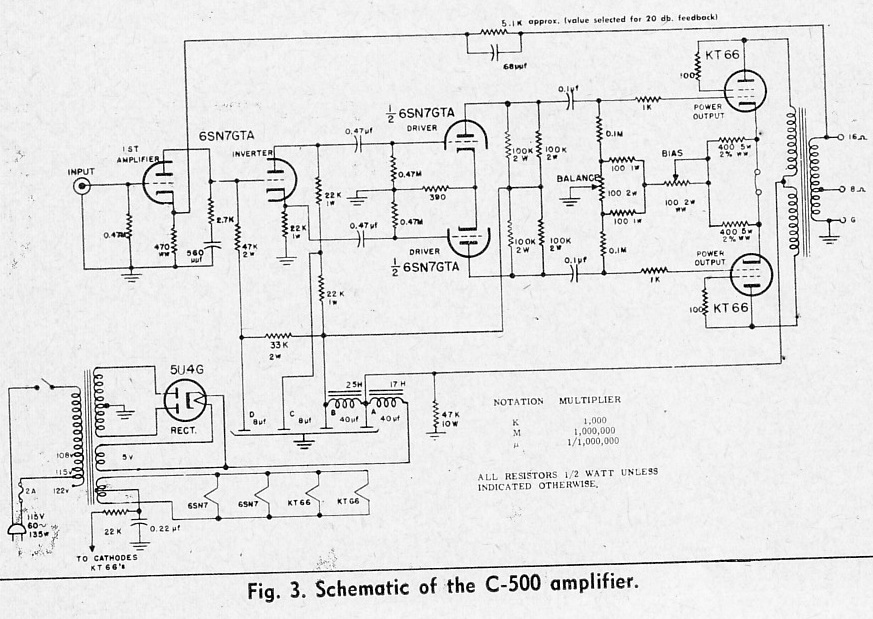 The Craftsmen C-500 power amplifier
The Craftsmen C-500 power amplifier
Today we have some hi-fi amplifiers from the mid 1950s to look at. Many of them use unusual output transformers with split primaries, so I am really not sure if it’s even possible to build these designs today. The Craftsmen C-500 pictured above uses a standard PP-VC output transformer; it also uses readily available, robust 6SN7 and Kt66 (aka 6L6) tubes. Check out the circuit in the output cathode bias; even though this is a cathode-biased amp, there is a provision for adjusting the overall bias, as well as a balance adjustment ( to allow the use of unmatched power tubes). Here’s a few more…
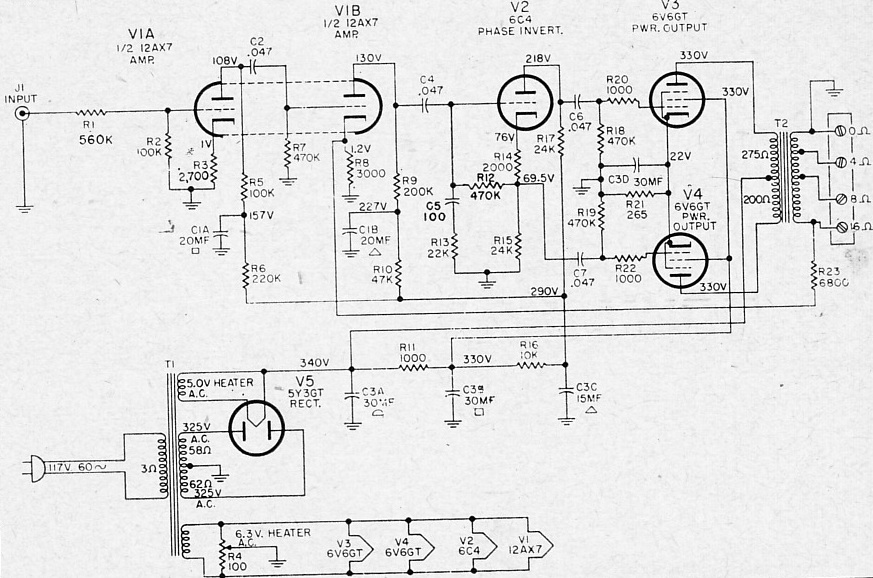 General Electric A1-300 power amp. This is a good simple design that will provide 12 watts.
General Electric A1-300 power amp. This is a good simple design that will provide 12 watts.
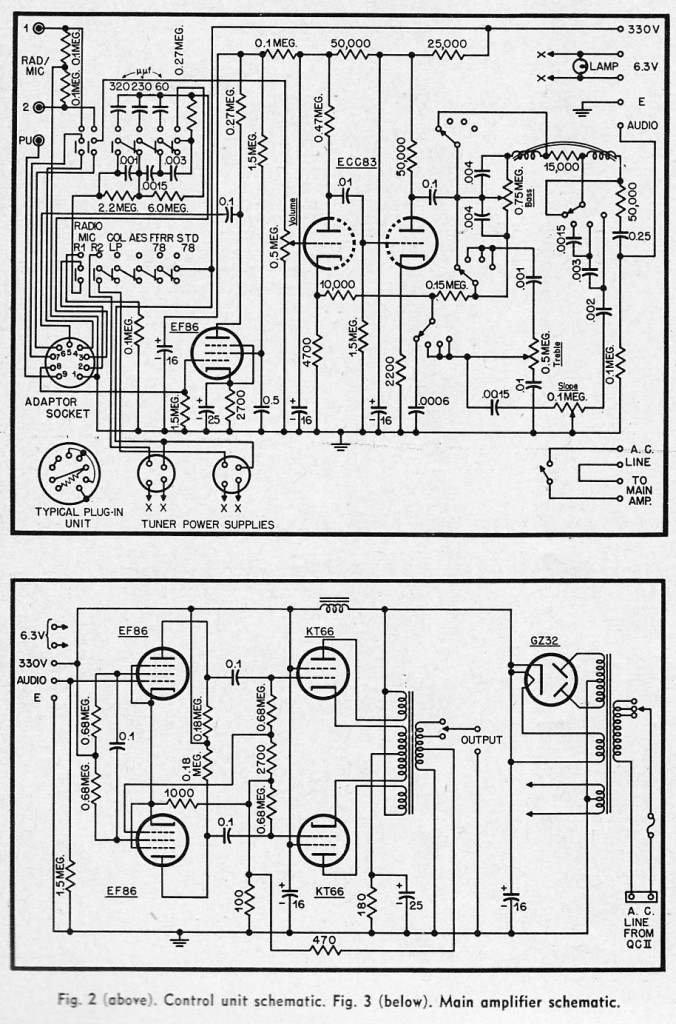 The Quad II pre-amp and power amp.
The Quad II pre-amp and power amp.
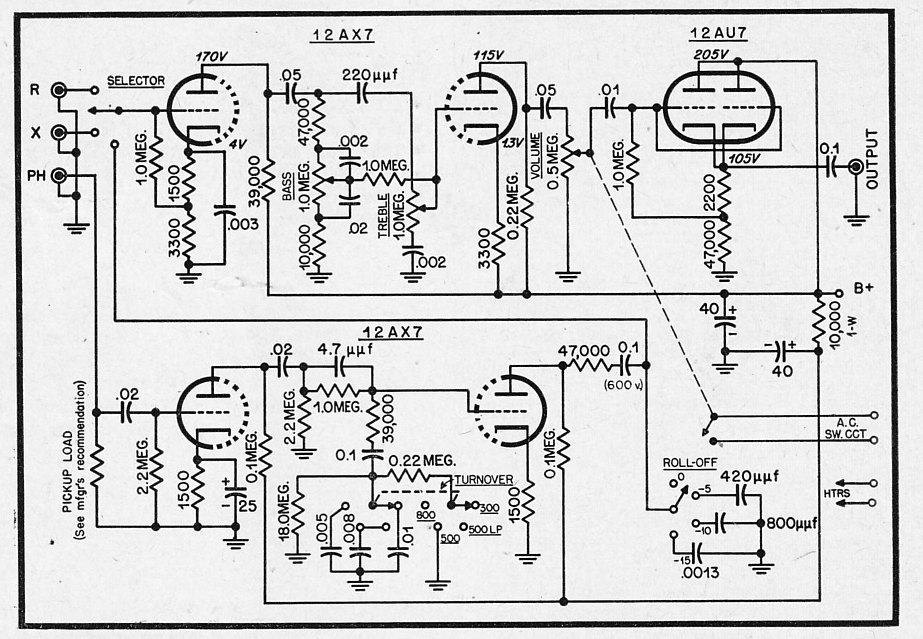 A DIY hi fi preamp design from 1954. Note the very sturdy parallel-cathode-follower output (the 12AU7 section). This could probably drive a 10K load pretty easily.
A DIY hi fi preamp design from 1954. Note the very sturdy parallel-cathode-follower output (the 12AU7 section). This could probably drive a 10K load pretty easily.
1955: Japan Goes Hi-Fi
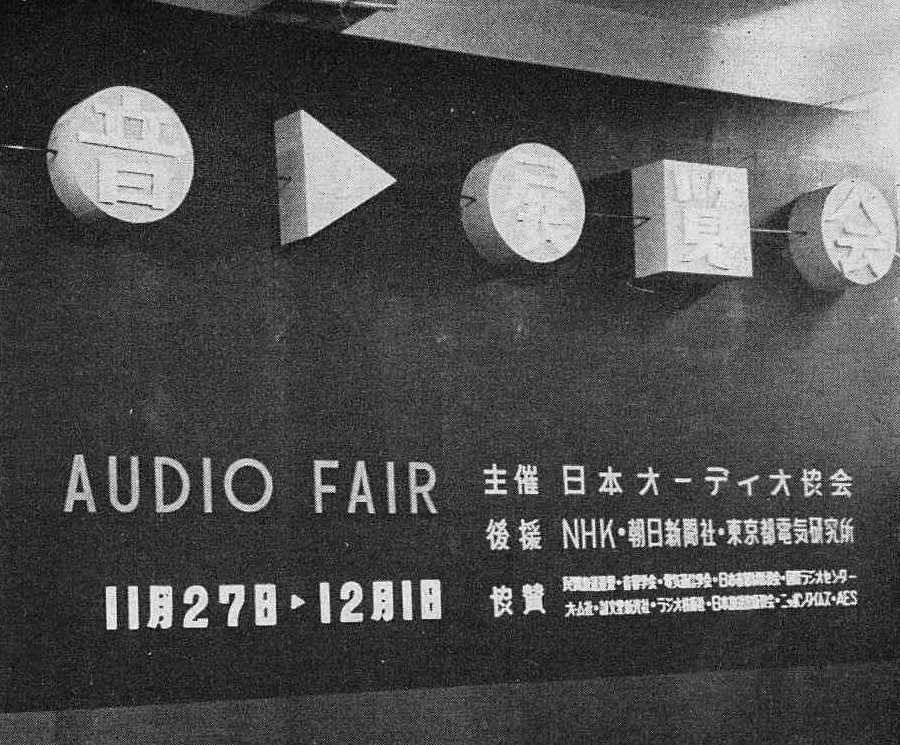
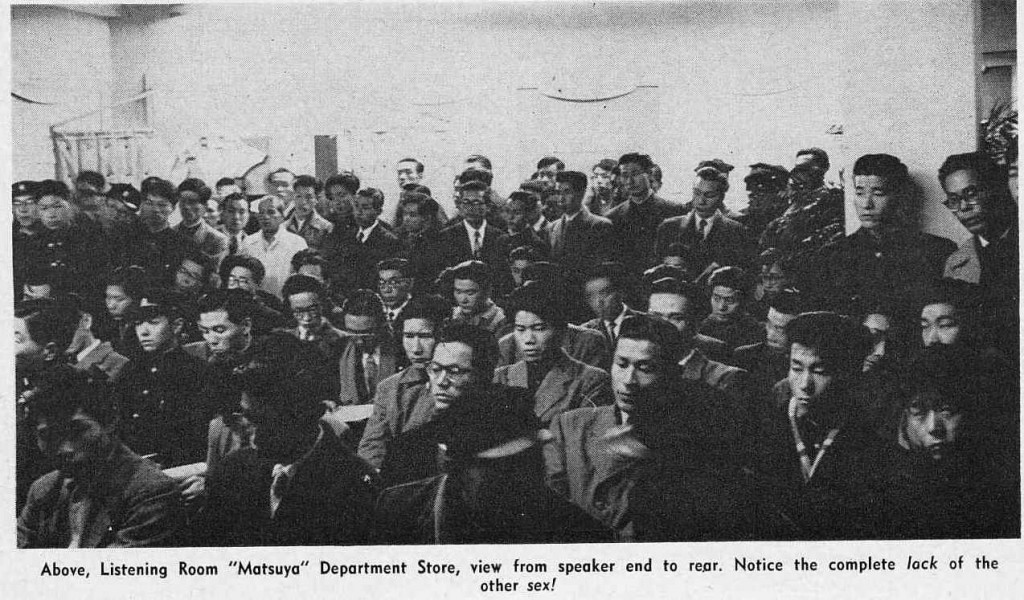 Download a three-page 1955 article entitled “Japan Goes Hi-Fi” as originally published in AUDIO magazine.
Download a three-page 1955 article entitled “Japan Goes Hi-Fi” as originally published in AUDIO magazine.
DOWNLOAD: Japan_Goes_hifi_1955
The article concerns an early Hi-Fi show in Tokyo. Postwar Japan had sufficiently moved beyond the subsistence level to indulge in luxury-leisure pursuits; soon Japan would come to dominate the world in the electronics field.
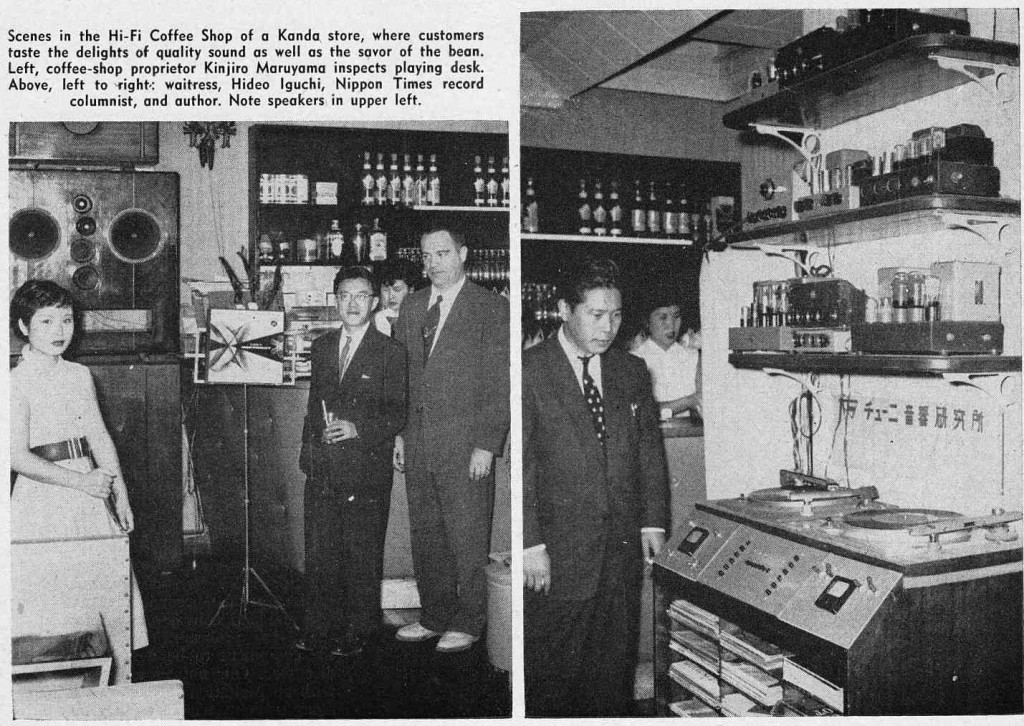 The ‘hi-fi coffee shop’ pictured above may seem like a quirky anomaly, but you would be amazed at the sound systems on display in even modest Japanese bars and restaurants. The last time I was in Japan, we stayed at a bed and breakfast in the mountains of Hokkaido; upon arrival at the inn, my jaw dropped when I saw that the sound system in the lounge consisted of a JBL Paragon speaker and huge McIntosh tube amplifiers. It’s hard to say exactly why this trend developed, but if you spend any time in Japan, I think it’s clear that ‘excellence’ in general is an important concept in Japanese culture.
The ‘hi-fi coffee shop’ pictured above may seem like a quirky anomaly, but you would be amazed at the sound systems on display in even modest Japanese bars and restaurants. The last time I was in Japan, we stayed at a bed and breakfast in the mountains of Hokkaido; upon arrival at the inn, my jaw dropped when I saw that the sound system in the lounge consisted of a JBL Paragon speaker and huge McIntosh tube amplifiers. It’s hard to say exactly why this trend developed, but if you spend any time in Japan, I think it’s clear that ‘excellence’ in general is an important concept in Japanese culture.
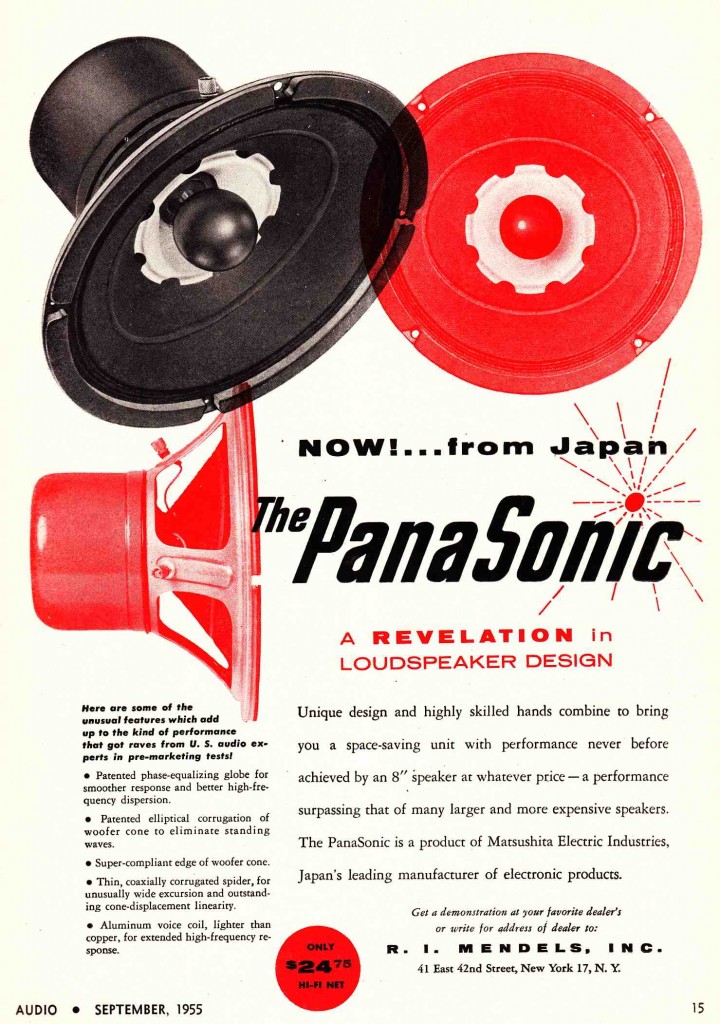 Above is a 1955 advert for The Panasonic. Not ‘a Pansonic,’ but THE Panasonic. The Panasonic was a single product introduced for the US market by the Matsushita corporation: an 8″ full-range hi-fi driver. Panasonic would soon grow into an entire global electronics brand, second only to SONY as an ambassador of the Japanese electronics industry.
Above is a 1955 advert for The Panasonic. Not ‘a Pansonic,’ but THE Panasonic. The Panasonic was a single product introduced for the US market by the Matsushita corporation: an 8″ full-range hi-fi driver. Panasonic would soon grow into an entire global electronics brand, second only to SONY as an ambassador of the Japanese electronics industry.
Here is a 1955 review of “The Panasonic:”
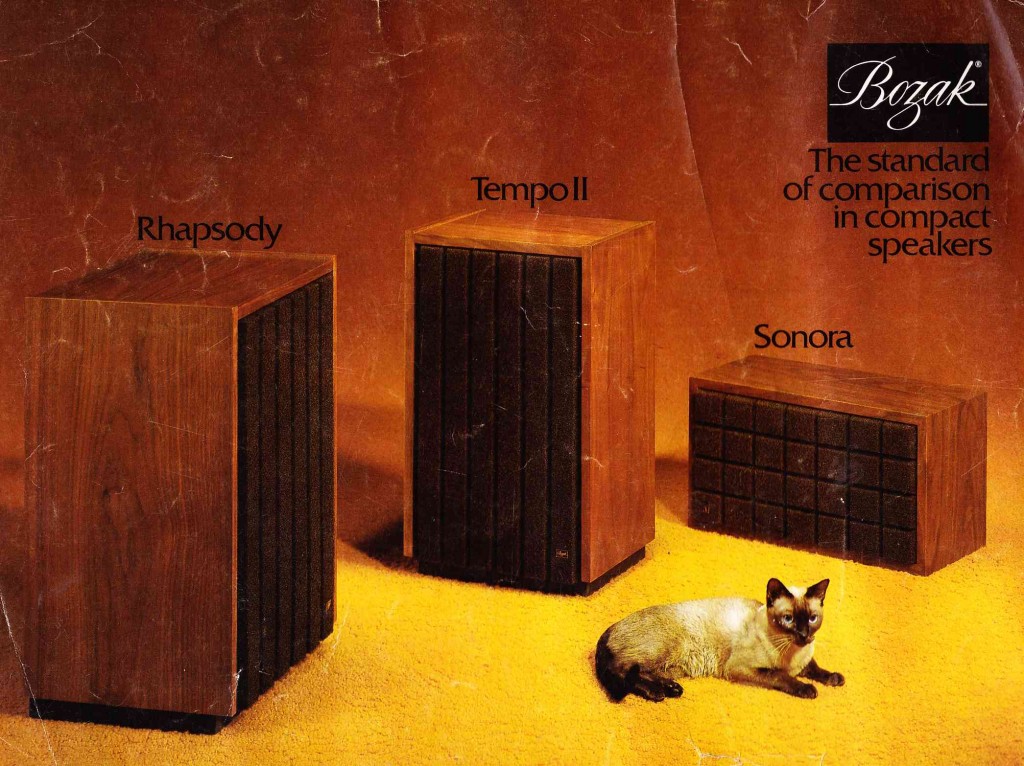 Download the four-page circa 1975 ‘Bozak Compact Speakers’ Catalog:
Download the four-page circa 1975 ‘Bozak Compact Speakers’ Catalog:
DOWNLOAD: BozakCompactSpks
Catalog contains photos and specs for the Bozak Rhapsody, Tempo II (Tempo 2), and Sonora speaker units.
Bozak is another important chapter in Connecticut audio history. The famous manufacturer of legendarily large home hi-fi speakers was based in Connecticut for the entirety of their 30-year heyday. Pennsylvania native Rudy Bozak set up shop in Stamford in 1951, later moving to South Norwalk and Darien, with operations in several other towns. Wikipedia has an excellent and thorough treatment of Bozak, the man, his myriad technical innovations, and the long history of the company. No need to re-tread those waters; I will add this though: growing up in Connecticut, enormous 225-lb Bozak Concert Grand loudspeakers were a memorable site in the homes of some of my friends; a room-dominating testament to the intensity of a largely lost culture of audiophiles.
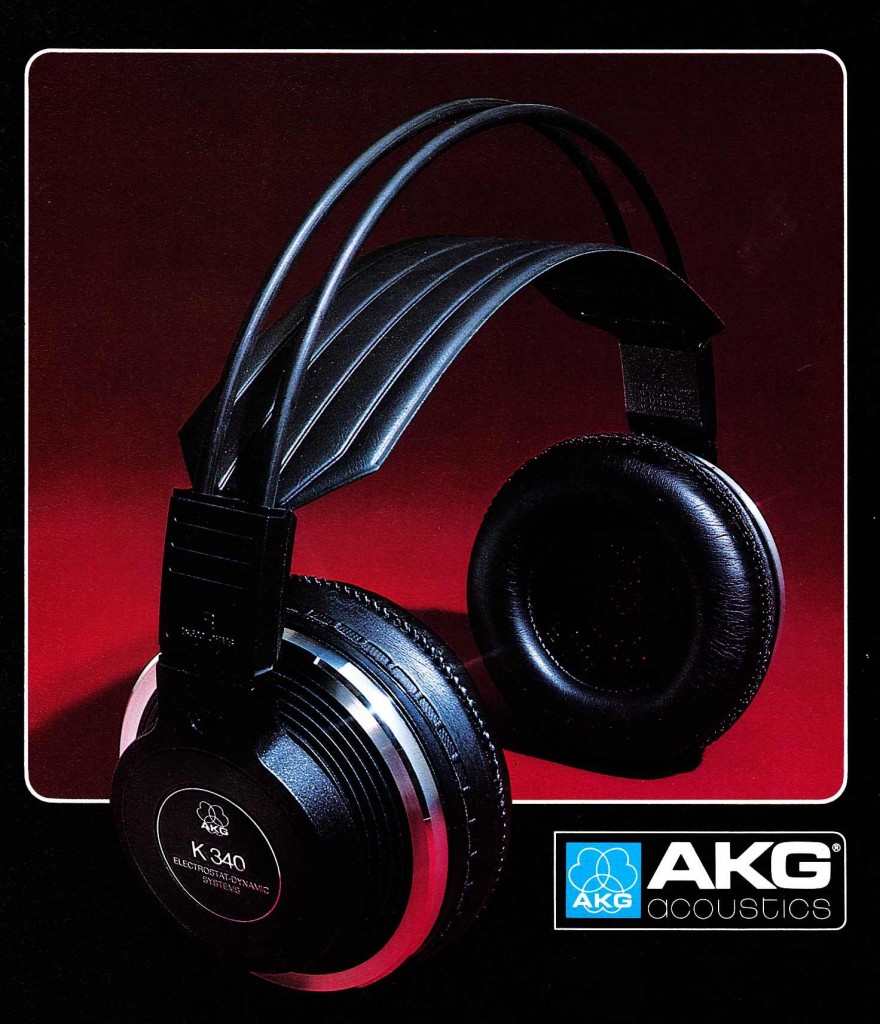 Download the six-page color product sheet for the venerable AKG K-340 headphone of 1979:
Download the six-page color product sheet for the venerable AKG K-340 headphone of 1979:
DOWNLOAD: AKG_K340
The AKG K-340 (not to be confused with the modern AKG K 340 earbud) was AKG’s top of the line headphone of the 1980s. Introduced in 1979, the K-340 took the basic design of the classic K-240 (which was very sophisticated in and of itself) and added the additional complication of a separate Electrostatic driver and associated crossover network.
Wikiphonia has a detailed entry on these unusual headphones, so no need to re-tread those waters; the six-page document I post here is some new material for the web, though, AFAIK. Check it out… and if anyone uses these cans, LMK yr thoughts…
Click here for previous vintage AKG headphone coverage on PS dot com
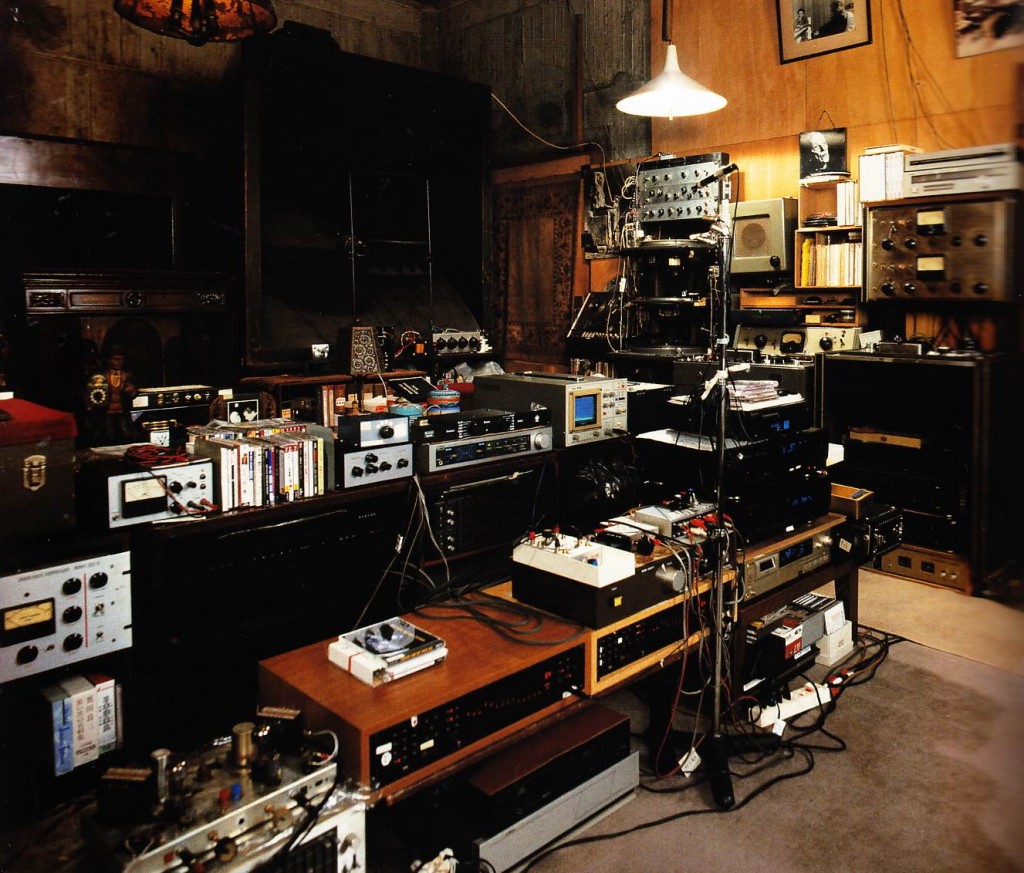 Wow would you take a look at that pile.
Wow would you take a look at that pile.
Been thinking about Japan a lot lately; it’s impossible not to, what with the coverage of the horrific events suffered there by so many. As I type this, NPR is reporting that the official death toll has just passed 10,000. I attended a public magnet school for 10th grade in which I was taught Japanese and then sent to Japan to live with a suburban family for a month. This experience had a profound effect on me and I am consequently one of many Americans who has a great fascination with, and affection for, Japan. It is notable that middle-aged Japanese men seem by all accounts to be the world’s leading demographic of vintage-audio fans and collectors; antique audio has become my obsession as well. Not sure how the chicken/egg thing sorts out on this one but there you go.
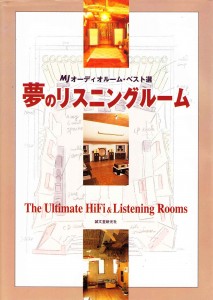 “The Ultimate HiFi & Listening Rooms” was published sometime in the past decade. From what I can divine from the wholly Japanese text, it seems to be a collection of “Show us your system!” reader-submissions as published from 1989- 2002 in MJ Audio Technology, the venerable Japanese magazine. See this earlier post for full details on MJ.
“The Ultimate HiFi & Listening Rooms” was published sometime in the past decade. From what I can divine from the wholly Japanese text, it seems to be a collection of “Show us your system!” reader-submissions as published from 1989- 2002 in MJ Audio Technology, the venerable Japanese magazine. See this earlier post for full details on MJ.
If there is one thing that collectors of obscure items all enjoy, it’s seeing the similar collections of others, and this book does not disappoint. I picked this up in Tokyo several years back, and I have no idea if it is still in publication; if it is, Kinokuniya can certainly import it for you (The ISBN 10 is: 4-416-10201-1).
Here are some examples of the wonders on display in this 192pp volume.
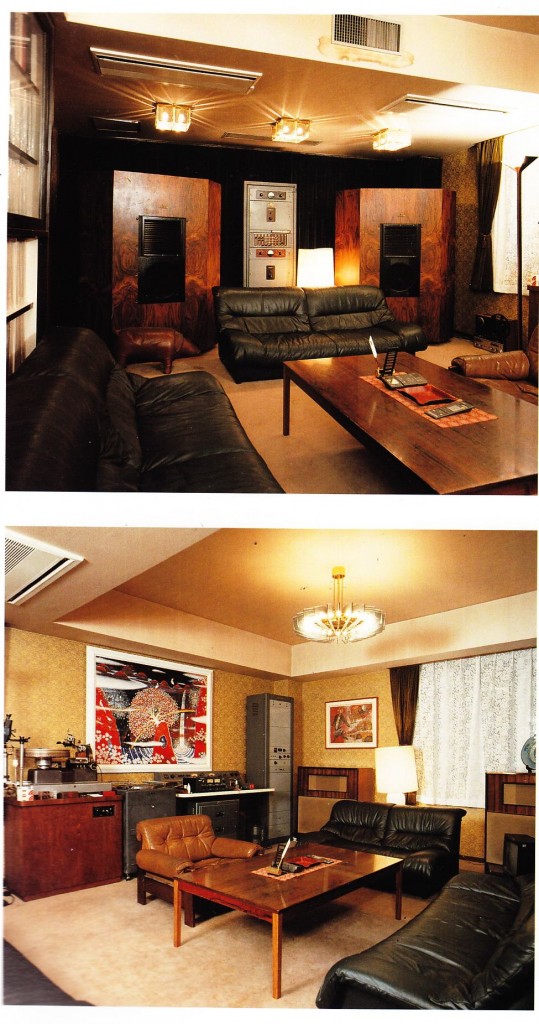 I really dig how the inclusion of the antique-industrial-electronics within an otherwise conservative, posh-masculine domestic space creates a real Matthew Barney vibe. Or, in a different sense, it feels like the discourse established by the obelisks in the various images within the Led Zep ‘Presence’ sleeve.
I really dig how the inclusion of the antique-industrial-electronics within an otherwise conservative, posh-masculine domestic space creates a real Matthew Barney vibe. Or, in a different sense, it feels like the discourse established by the obelisks in the various images within the Led Zep ‘Presence’ sleeve.
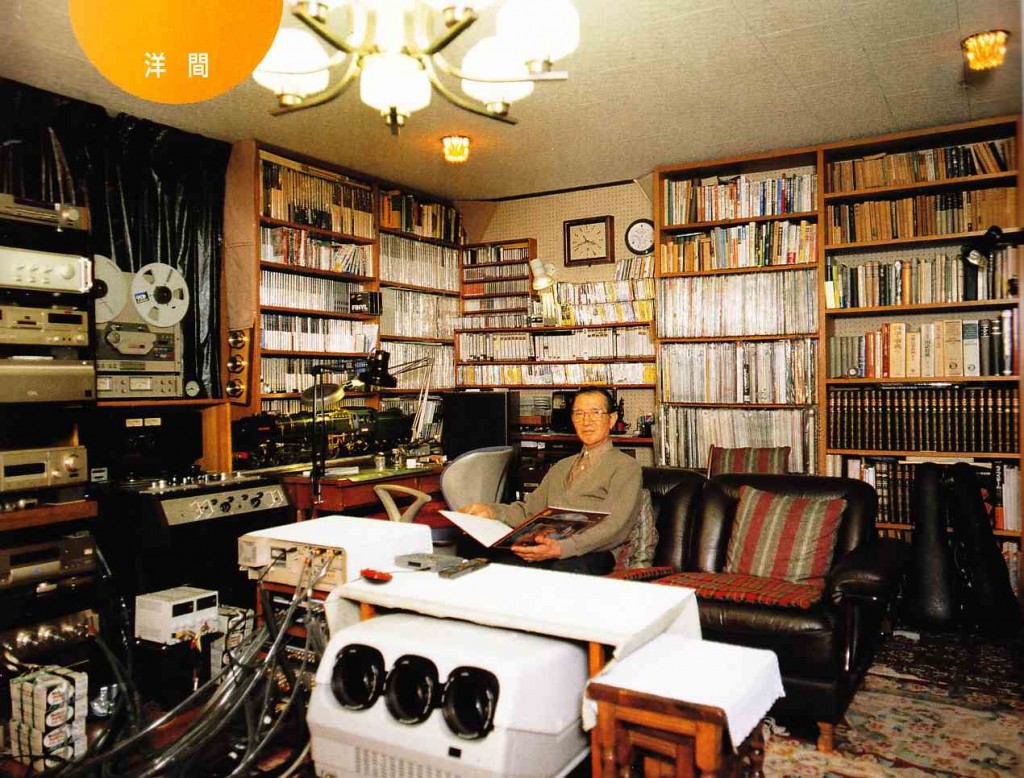
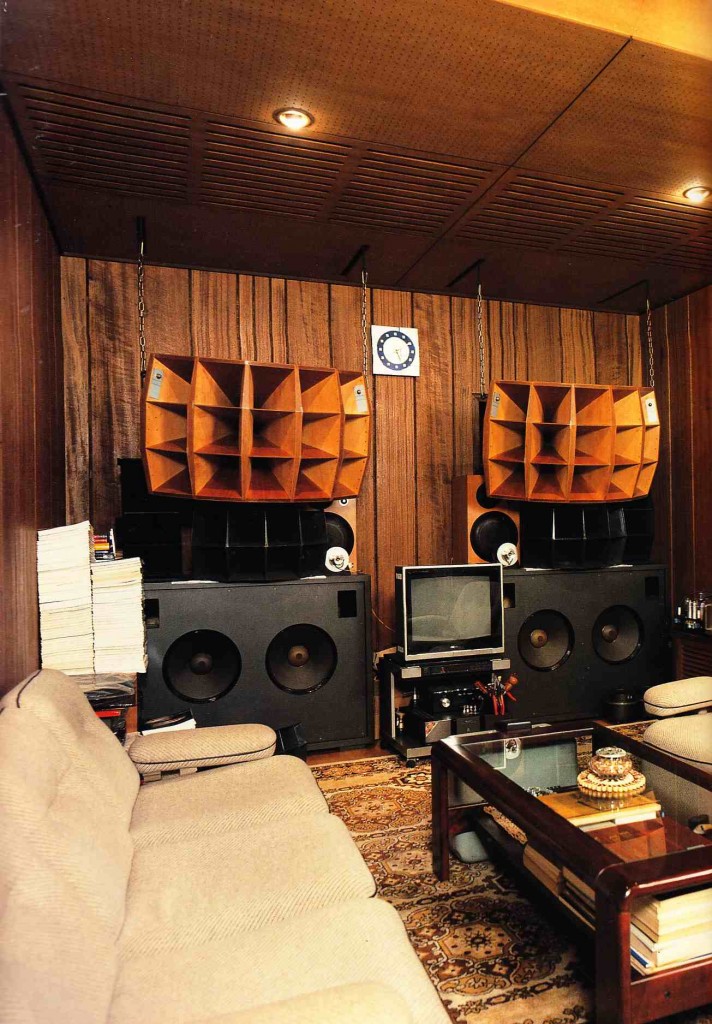
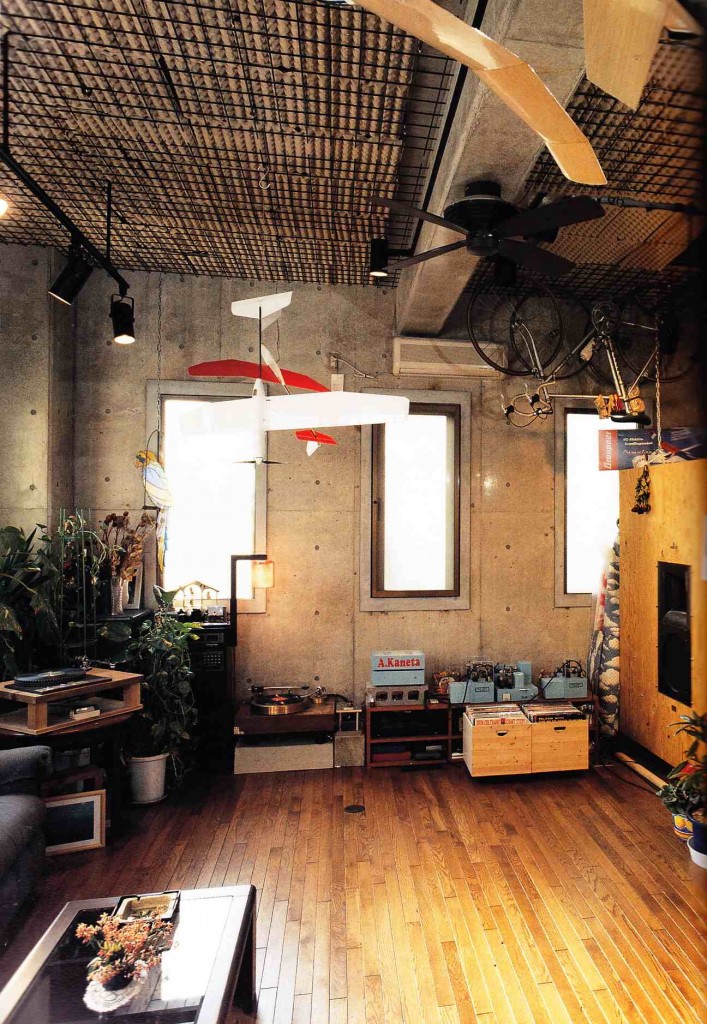 Aside from the strange and sizeable systems, many of the spaces themselves are quite beautiful and idiosyncratic.
Aside from the strange and sizeable systems, many of the spaces themselves are quite beautiful and idiosyncratic.
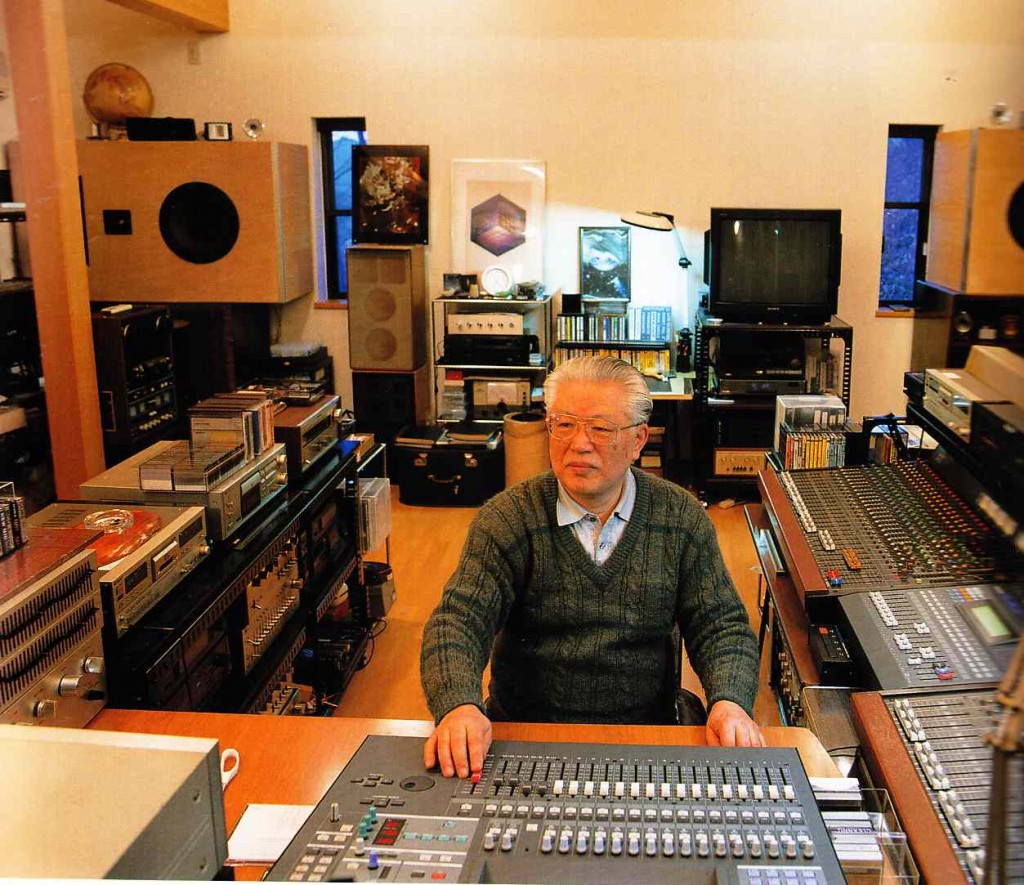 Portraiture of the obsessed. Highly recommended.
Portraiture of the obsessed. Highly recommended.
See this link for previous Japanese Super-Collector coverage on PS.com
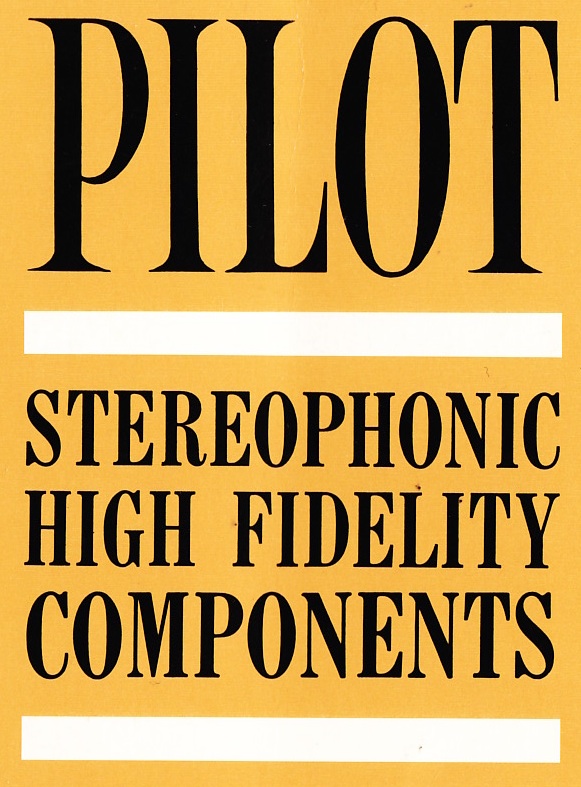 Download the entire twenty-page 1962 PILOT hi-fi catalog:
Download the entire twenty-page 1962 PILOT hi-fi catalog:
DOWNLOAD: Pilot_HiFi_Line_1962_Catalog
Models covered include: Pilot 610, 602MA, 602SA, 654MA, and 746 receivers; Pilot Mark III, 280B, 285, and 780 FM tuners; Pilot 230, 240, 246, and 248B stereo integrated amplifiers; Pilot 200, 120, and 100 FM Stereo Multiplexers; Pilot-Garrard RC-3, RC-5, and RC-4 turntables; and Pilot PSV-2, PSV-3A, and PSV-4 speaker systems.
 When you think of //Long Island City/Audio History//, what comes to mind, if anything? Likely Fairchild and Marantz. Pilot made neither pro-audio nor true high-end hi-fi, but as the graphic above reveals, they had quite a deep and storied history. I have only one PILOT piece in my audio-pile (never say c%!!&ction) – an early stereo extension speaker – but I would bet that some of these pieces are pretty decent.
When you think of //Long Island City/Audio History//, what comes to mind, if anything? Likely Fairchild and Marantz. Pilot made neither pro-audio nor true high-end hi-fi, but as the graphic above reveals, they had quite a deep and storied history. I have only one PILOT piece in my audio-pile (never say c%!!&ction) – an early stereo extension speaker – but I would bet that some of these pieces are pretty decent.
